Every hour of practice brings your child closer to success.
Let’s work together to ensure your child excels on the test!

Hey there! Do you have a question about the test or our practice package? Email me at roman@staggingapps.website. I'm here to help your child succeed!
The following sample questions are also available in two other formats:
Figure Matrix questions are either 2×2 or 3×3 matrices comprised of different pictures. In each row and/or column, the pictures change in the same way or follow the same rule.
Choose the answer that goes in the empty box in the matrix following the same rule.
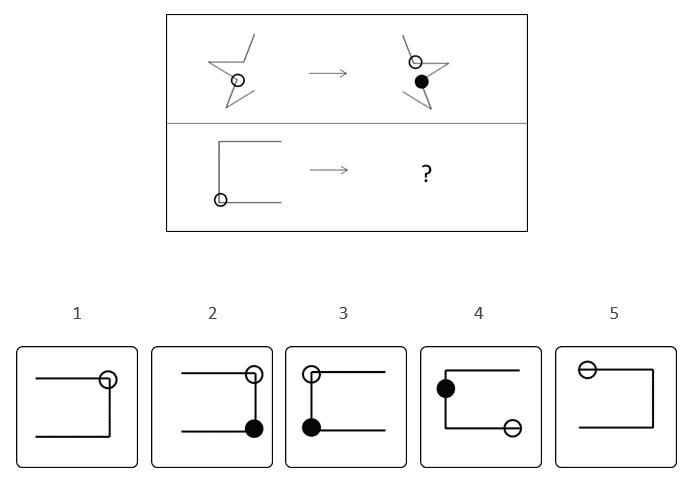
The correct answer is 2.
• The figure on the left is flipped horizontally on the right.
• Also, the circle is now dark.
One new circle has been added to the figure: A white circle in the corner above it.
We can eliminate answer choices 3 and 4 because they are positioned in the same way as the first shape (bottom row left side).
When we look at the other three answer choices, we see that only answer choice 2 matches the pattern.
Notice that answer choice 1 includes nearly all the necessary changes, but it is without a dark circle.
Therefore the 2nd answer choice is the correct answer.

Welcome to your go-to practice resource for the 2025 CogAT 5th Grade Test (Level 11)!
To maximize your child’s scores and help them get accepted to your desired Gifted program, we have designed an effective preparation process that has helped countless students succeed:
The correct answer is (C).
Identify the image that completes the pattern by examining how the series of shapes change across the rows and down the columns within the matrix.
Across each row, the number of lines jetting out of the circle is 9 in total.
In row three, 6 lines are already available so the last column must contain a shape with three lines jetting out.
So, it makes answer (C) correct.
The Figure Classification questions show three pictures that share a connection or a characteristic. Choose the answer that shares the same connection/characteristic from the answer choices.
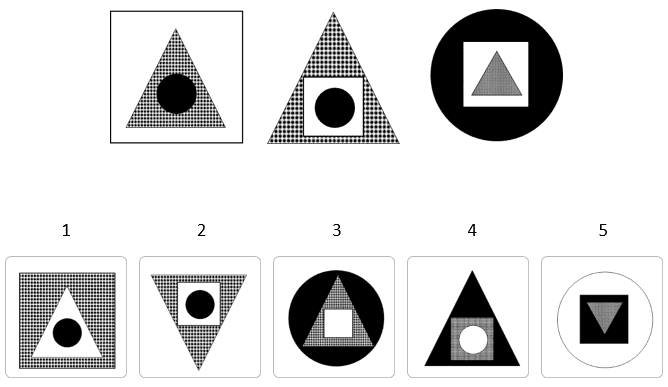
The correct answer is 3.
In this question you can see that:
– All figures consist of three different shapes: a triangle pointing upward, a square, and a circle.
– Each shape is filled differently and consistently: the triangle is checkered, the square is white, and the circle is black.
Answer choice 3 consists of a checkered triangle pointing upward, a black circle, and a white square. Therefore, this is the correct answer.
You can eliminate answers 2 and 5 immediately as the triangle is pointing down instead of upward.
You are now left with answers 1, 3, and 4. In answers 1 and 4, the square is checkered and the triangle is white/black, while in each of the top figures the square is white and the triangle is checkered.
Therefore, answer 1 and 4 are incorrect and you are left with answer 3.
Each question shows a paper folded several times and then punched with holes. The answer choices contain unfolded papers with punched-in holes. You need to determine which of the answer choices is the final product of the unfolded punched-in paper.
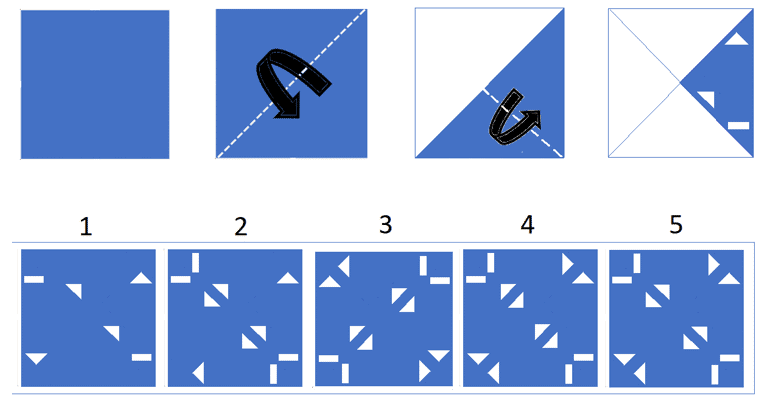
The correct answer is 5.
Hence, the correct answer is 5.
Nonverbal questions can be tricky, especially when students face them for the first time under time pressure. But with regular practice, your child can master them.
The more your child practices, the more confident they’ll become—and soon these questions will feel like second nature.
Our complete practice package offers over 140 CogAT Nonverbal questions, designed to sharpen skills and boost scores.
Help your child prepare with a complete practice package designed to maximize their performance on the CogAT 5th Grade test.
Each question provides two pairs of numbers with a certain mathematical connection and another number that shares that connection with one of the answer choices. Find the missing number for the third pair.
[15 → 31] [21 → 49] [25 → ?]
A. 16
B. 28
C. 43
D. 49
E. 61
The answer is 61.
Look for the pattern in the first series of numbers. We get from 15 to 31 by multiplying by 3 and then, subtracting 14 (the pattern is ×3 – 14). Indeed, 15 × 3 = 45 – 14 = 31.
Likewise, we get from 21 to 49 by using the same pattern (rule) (×3 – 14). Indeed, 21 × 3 = 63 – 14 = 49.
The next series of numbers should follow the same pattern, meaning that the rule between 25 and ? should be (×3 – 14) as well: 25 × 3 – 14 = 61, meaning that the correct answer will be 61.
? = 61.
Each question provides a series of numbers that have a rule. Use the rule to determine which number will come next in the series.
53 66 78 89 99 108 ?
A. 109
B. 113
C. 107
D. 112
E. 116
Correct Answer: 116
In the series, the next number is obtained by adding 13 to the previous number in the first turn, then adding 12 to the previous number in the second turn, and so on.
The number added to get the next number decrease by 1 with each turn. The sequence is 53+13=66, 66+12=78, 78+11=89, 89+ 10 = 99, 99 + 9 = 108 and 108 + 8 = 116.
In each question you are given one or more equations. You must solve the equations to determine the number that goes instead of the question mark.
? = ★ + 7
14 = ★ – ●
● = 4
A. 19
B. 25
C. 17
D. 21
E. 16
Correct Answer: 25
Explanation:
Let’s start by solving the third equation:
● = 4
Now we use this value in the second equation:
14 = ★ – ●
14 = ★ – 4
Add 4 to both sides to find ★:
★ = 14 + 4 = 18
Now use this value for ★ in the first equation:
? = ★ + 7
? = 18 + 7 = 25
So, the correct number that goes in place of “?” is 25.
Therefore, the correct answer is 25.
If your child finds math challenging, don’t worry—many kids experience the same at this stage.
Encourage your child with small daily practices—they’ll build confidence as they improve.
Every bit of practice counts, and with time, your child will build strong math skills.
Looking for ways to support your child’s math skills? Get our practice package with over 140 Math practice questions designed just for them.
Each question provides a pair of words that go together in a certain way and a third word. Choose a word from the answer choices that goes together with the third word in the same way.
flowers → bouquet : pages →
A. work
B. library
C. book
D. computer
E. entertainment
The correct answer is book.
Flowers combine to form a bouquet. Pages combine to form a book.
In this case, the first word (individual components/noun) combine to form the second word (a noun). The first word represents parts of a whole.
Choose the word or words from the answer choices that best complete the sentence.
Roger had always believed it was _____ to follow the rules, except when a better option arises, at which point it is best to _____ the decision-maker.
A. wise .. inform
B. foolish .. ignore
C. logical .. dismiss
D. unnecessary .. challenge
E. crucial .. avoid
Correct Answer: wise .. inform
Explanation: The sentence suggests that Roger typically values following rules unless there is a better choice, in which case it’s best to inform the person in charge. “Wise” and “inform” are the best fit. Other options are incorrect because:
Each question provides three words that are alike in some way. Decide how they are alike, and choose the word that belongs in the same group as the first three words.
wall fingernails car
A. color
B. house
C. choose
D. fade
E. brighten
The correct answer is house.
A wall, fingernails, a car, and a house are all things one might paint.
Boost your child’s CogAT scores with practice tests and focused drills that look and feel like the actual test.
Robust Practice:
Get access to 27 comprehensive practice tests with over 440 CogAT-specific questions. These tests help develop crucial cognitive skills, making tough problems more manageable.
Real-World Test Simulation:
Prepare with a simulation of the actual CogAT 5th Grade exam, featuring questions that mimic those on the test. This preparation helps your child get comfortable with the exam layout and improves their time management skills.
Targeted Skill Enhancement:
Our focused drills improve verbal, quantitative, and nonverbal reasoning skills, concentrating on areas where your child needs the most improvement to ensure consistent performance.
Advanced Challenge Questions:
Challenge your child with over 130 high-level questions designed to enhance their cognitive abilities, giving them a competitive edge and boosting their performance across the test.
Clear, Kid-Friendly Explanations:
Each question includes a detailed, kid-friendly explanation that helps your child understand their mistakes and reinforces learning effectively.
Designed by Experts:
Our practice materials are created by experienced educators and test prep specialists, ensuring they meet educational standards and incorporate best teaching practices.
Risk-Free Satisfaction Guarantee:
Try our CogAT practice package risk-free. If you’re not satisfied within 30 days, we offer a full refund.

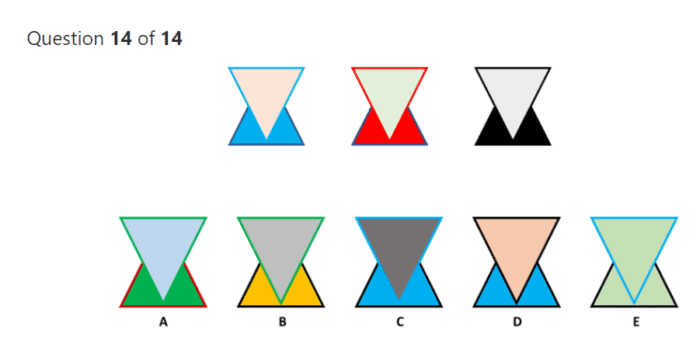
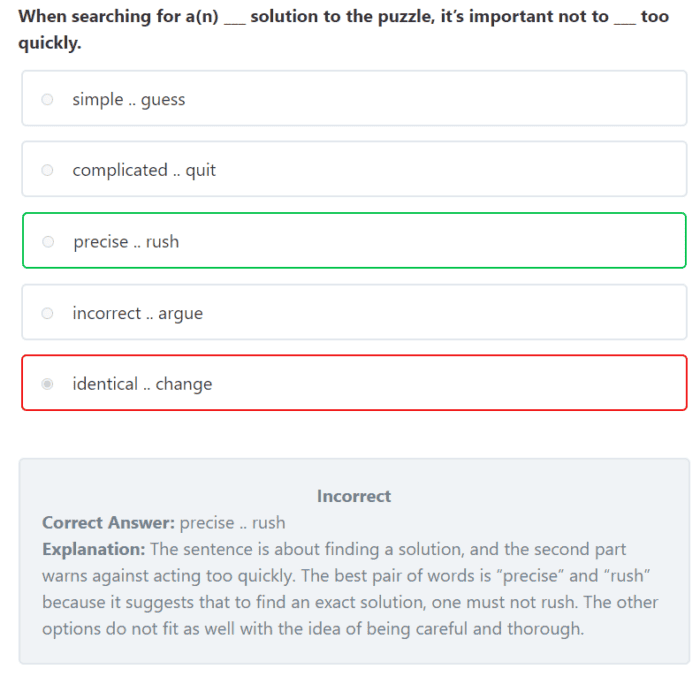
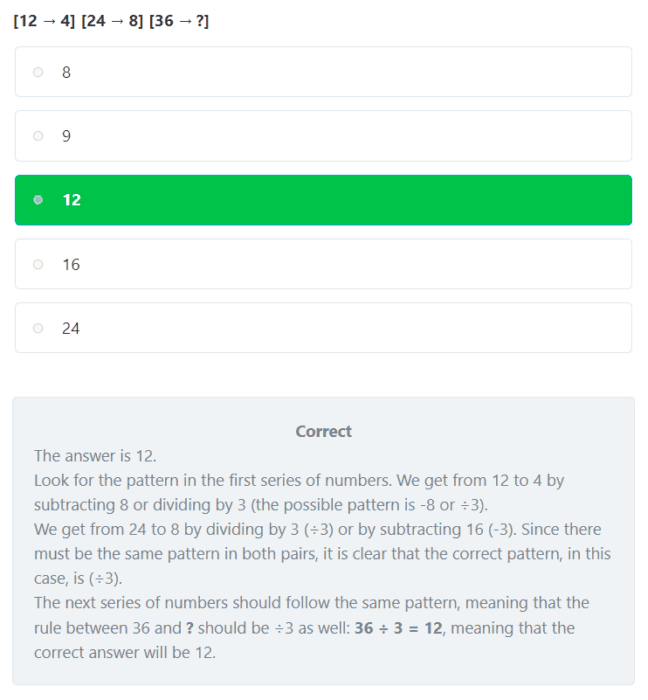
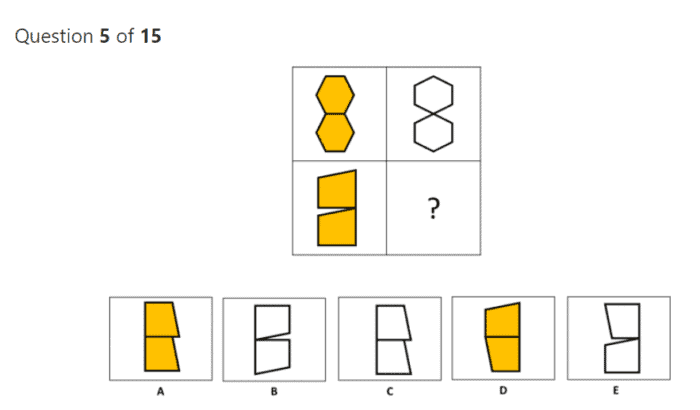
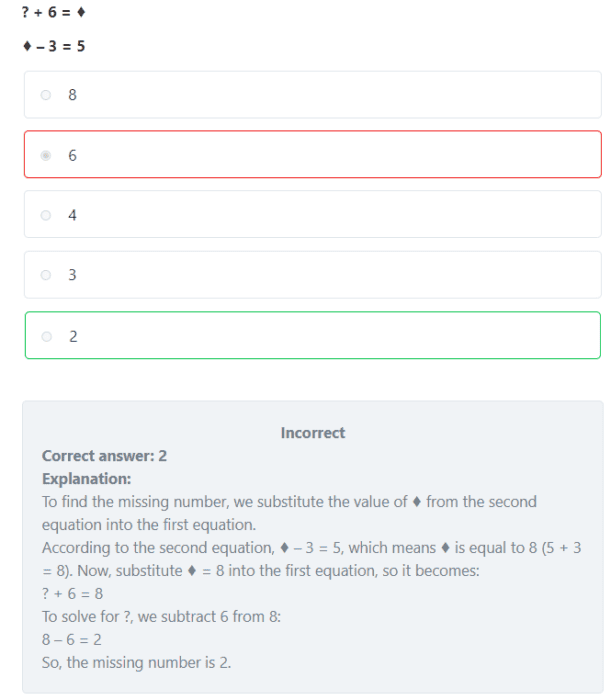
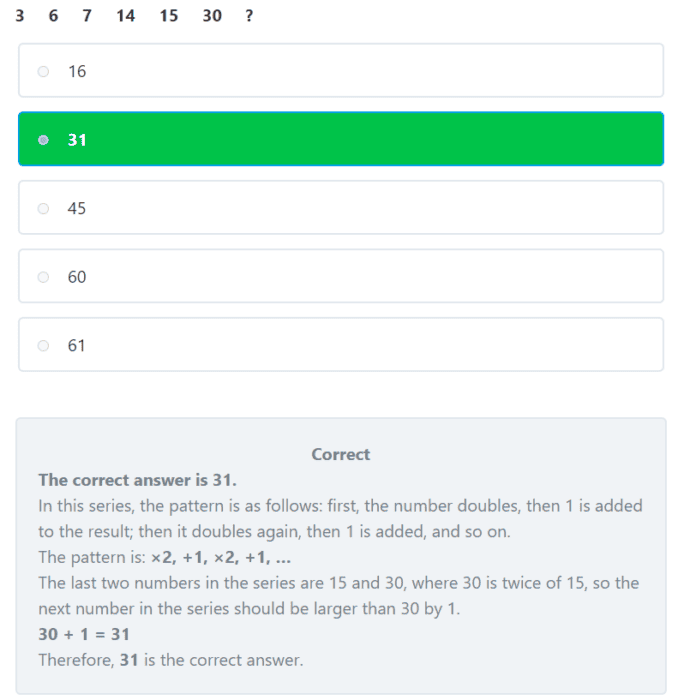
One-time Payment & 6-Month Unlimited Access
The CogAT Test for 5th graders is designed to evaluate students’ reasoning skills and determine their potential for placement in gifted and talented programs.
With a total of 176 questions, the test is aimed at students approximately 11 years old.
It is structured into three primary sections: Verbal, Quantitative, and Nonverbal, with each section containing three subtests.
Schools can choose to administer the entire test in one session or over several days, based on their schedule and the needs of their students.
Refer to the table below for a detailed overview of the subtests in each section.
| No. of Questions | Time Limits | |
|---|---|---|
| Nonverbal Battery | ||
| Figure Matrices | 22 | 10 minutes |
| Figure Classification | 22 | 10 minutes |
| Paper Folding | 16 | 10 minutes |
| Quantitative Battery | ||
| Number Analogies | 18 | 10 minutes |
| Number Series | 18 | 10 minutes |
| Number Puzzles | 16 | 10 minutes |
| Verbal Battery | ||
| Verbal Analogies | 24 | 10 minutes |
| Sentence Completion | 20 | 10 minutes |
| Verbal Classification | 20 | 10 minutes |
| Total | 176 Questions | 90 minutes (not incl. settling time) |
The complete practice package includes a full-length simulation with the same number of questions (176) and time limits (90 minutes). This will enable your child to get used to the test’s time pressure and improve their time management skills.
Many parents hear that it’s impossible to prepare for cognitive ability tests like the CogAT, or that doing so might give students an unfair edge.
In truth, preparing for these tests isn’t about “teaching to the test.” Rather, it’s about helping students become familiar with the test structure, develop effective problem-solving techniques, and build confidence when approaching unfamiliar question types.
Here’s why preparation makes a difference:
Alleviate Test Anxiety: Even high-achieving students can feel stressed when encountering unexpected question formats. Practice allows them to get comfortable with the test, reducing anxiety when it matters most.
Master New Question Formats: The CogAT includes questions that students don’t typically see in their everyday schoolwork, like figure matrices or paper folding. Practicing these can help students approach them with more confidence and a clear strategy.
Strengthen Cognitive Abilities: Preparation enhances critical thinking, pattern recognition, and reasoning skills—abilities that benefit students not only during the test but also in their broader academic journey.
Ensure a Fair Opportunity: Test preparation doesn’t teach “answers,” but equips students with strategies that help them perform at their best. It’s about ensuring they have the same opportunities as other well-prepared students.
Boost Confidence: Confidence comes from knowing what to expect. When students are familiar with the test format and have practiced similar questions, they are more likely to feel empowered and do their best.
Getting into gifted programs is highly competitive, and while natural talent is key, preparation ensures that your child’s true abilities are showcased when it counts.
Your child deserves the best preparation to feel confident and perform their best on the CogAT test. That’s why we’ve created a thorough practice package tailored specifically to meet their needs.
Access 440+ practice questions across the Nonverbal, Quantitative, and Verbal batteries, designed to mirror the questions seen on the CogAT.
Build your child's confidence and abilities with targeted quizzes that focus on strengthening their knowledge in each of the 9 subject areas.
Boost your child’s problem-solving skills with advanced-level drills designed to stretch their abilities, making the actual test feel like a breeze.
One-time Payment & 6-Month Unlimited Access

Sharpening your child's skills with lifelike practice for gifted tests and school exams.
© 2025 GiftedReady | HTML Sitemap